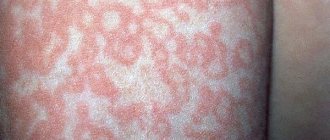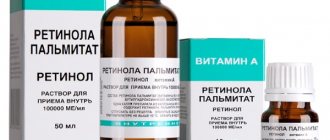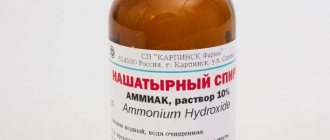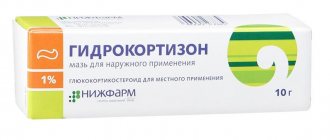Salicylic acid (English: Salicylic acid) is a well-known pharmacological agent belonging to the group of non-steroidal anti-inflammatory drugs. Its great benefits and low cost have made it one of the most popular home medicine kits. For the first time about salicylic acid became known in 1838, when the Italian scientist Rafael Piria isolated it from willow bark. It is the willow, which in Latin sounds like “salix”, salicylic acid and owes its name. Later, the German chemist Kolbe found a simple method for chemical synthesis salicylic acid, giving impetus to the mass production of medicines based on it. What is the uniqueness of this substance, and what are its benefits? You can learn about this and much more from the material in this article.
Pharmacodynamics and pharmacokinetics
When used as a local remedy, it has a distracting, irritating, and also weak antiseptic effect . In low concentrations it provokes a keratoplastic effect , in high concentrations it provokes a keratolytic effect .
The plasma concentration of salicylic acid reaches its maximum 5 hours after applying the drug to the skin under an occlusive dressing. Approximately 6% of the total absorbed amount of the substance is excreted unchanged in the urine, while the majority is excreted as metabolic products.
Side effects
An alcohol solution of salicylic acid must be used carefully, because the alcohol in the composition can cause side effects. Local skin reactions include:
- severe redness (skin becomes burgundy or bright red);
- increased skin dryness, peeling;
- tightness (facial movements cause severe discomfort);
- new skin rashes;
- burn;
- allergic reactions.
These phenomena are not a reason for canceling therapeutic measures if they are of moderate or mild severity. It is necessary to reduce the dosage of the drug and monitor the further reaction of the body. If the side effects go away after 1-2 days, then treatment can be continued. If negative manifestations persist, you should stop using the drug and consult a doctor to replace it.
Indications for use
The drug is used as a monotherapeutic agent and as part of combination drugs:
- for various types of painful skin conditions, including dys- and hyperkeratosis , psoriasis , ichthyosis , burns, acne, oily seborrhea , eczema , warts calluses , pityriasis versicolor ;
- with hyperhidrosis of the feet;
- for hair loss.
Contraindications
Salicylic alcohol, like any medicine, has a number of contraindications for use. It cannot be used:
- in case of hypersensitivity to the components of the composition;
- during pregnancy and lactation;
- with liver and kidney failure;
- if you are allergic to salicylic acid;
- children under one year old;
- if there are open wound surfaces;
Particular attention should be paid to the prohibition of use of the drug by pregnant and lactating women. Since the acid penetrates deeply into the skin and is quickly absorbed by epithelial cells, it can cause irreparable harm to the baby. You should not use not only an alcohol solution, but also any ointments, lotions and gels containing salicylic acid, as it very easily passes through the placenta. A high concentration of the substance can lead to anemia in the child and the development of cardiovascular pathologies. There is also a risk for the woman in labor - the use of the drug can provoke painful contractions or a decrease in labor activity.
Salicylic acid: instructions for use
In accordance with the instructions for Salicylic acid, the solution is used externally. It is recommended to treat the affected surface with it twice a day.
The medicine is applied with a cotton swab. To treat an area the size of your palm, no more than 5 ml of solution is required. The highest dose for adults is 2, for children - 0.2 grams per day. The course of treatment is no more than 7 days.
In otorhinolaryngological practice, it is recommended to instill the solution into the sore ear twice a day, 6 drops.
For acne, 1 percent salicylic acid is usually used. A two and three percent solution is suitable only for people with oily skin. If there are several pimples, the product is applied pointwise to each of them. If there are a lot of acne, wiping the entire surface of the facial skin with a cotton swab soaked in the solution is recommended.
The procedure is continued until a slight tingling sensation appears. After treatment, the face can be rinsed with water to neutralize the effect of the acid.
For Devergie's disease , psoriasis , seborrhea , ichthyosis , the use of salicylic acid 2 percent in the form of an ointment is indicated. In case of severe inflammation, the drug should be diluted with Vaseline 2-4 times. Frequency of applications - 1-2 times a day. After the peeling disappears, treatment is continued using other means.
Apply a thin layer of ointment to the wound surface. The treated surface is covered with sterile gauze. It is also possible to apply a napkin soaked in ointment to the wound.
Before applying a bandage, you should open the blisters, clean the wound of necrotic tissue and rinse it with an antiseptic.
It is recommended to change the dressing every 2 or 3 days until the wound is completely cleared of purulent and necrotic masses. The duration of treatment can vary from 1 to 3 weeks.
Rules for using antiseptic
How to use salicylic alcohol varies depending on the problem at hand. There are general recommendations that must be followed:
- The product is used for local treatment of affected skin areas.
- The daily dose for adults should not exceed 10 milliliters, for children over one year old - 1 milliliter.
- If the affected area is small, the composition should be applied once a day.
- For sensitive skin, it is better to use an alcohol antiseptic every other day.
- If possible, apply the product locally, avoiding simultaneous treatment of several areas (spot application using a cotton swab).
- Before using the solution, the skin must be cleansed of dirt and cosmetics.
- You can continue treatment with salicylic alcohol for two weeks, then it is recommended to take a break.
- A concentrated solution can injure the skin and cause burns, so it is better to consult a doctor who will individually select the dosage and indicate the frequency and duration of use of the drug.
Interaction
Salicylic acid can increase the permeability of the skin to other topical medications and, accordingly, enhance their absorption.
Absorbed salicylic acid may potentiate the side effects of sulfonylureas , oral hypoglycemic agents and methotrexate .
The solution is pharmaceutically incompatible with zinc oxide (forms insoluble zinc salicylate) and with resorcinol (forms melting mixtures).
Compound
This is a synthetic product consisting of two components: salicylic acid dissolved in ethyl alcohol in different concentrations. As a rule, the solution contains 1 or 2% of the antiseptic itself and 100 ml of 70% ethanol. The acid dissolves completely in alcohol, resulting in a concentrated product with a pronounced therapeutic effect. The drug has an antimicrobial, disinfectant, anti-inflammatory effect and performs other functions:
- dries out acne and pimples;
- disinfects the skin;
- relieves inflammatory processes;
- destroys pathogenic fungi and bacteria;
- constricts blood vessels at the site of application.
special instructions
What is salicylic acid?
The Pharmacopoeia describes salicylic acid as an odorless, slightly soluble substance in cold water, which can take the form of colorless and odorless needle crystals or white crystalline powder.
The structural formula of salicylic acid is
The empirical formula is C7H603. The systematic name of the compound is 2-hydroxybenzoic acid.
Receipt
The substance was first isolated in 1838 from willow bark. Hence its traditional name - salicylic acid: in Latin the word “willow” sounds like “salix”. The discovery belongs to the Italian chemist R. Piria.
glycoside salicin contained in willow bark into 2 parts, reveal that its acidic component (salicylic acid) has valuable medicinal properties, determine its chemical composition and successfully synthesize it. This can be considered the first purification of the substance, which served as the impetus for the development of the drug Aspirin .
Samples of acetylsalicylic acid suitable for medical use (chemically pure and in a stable form) were first obtained on August 10, 1897 by the German scientist F. Hoffmann.
Salicylic acid derivatives are methyl salicylate , lysine acetylsalicylate , acetylsalicylic acid , salicylamide , mesalazine , choline and sodium salicylates .
Chemical properties
The chemical properties of the compound are due to the presence of a phenolic hydroxyl, a benzene ring and a carboxyl group in the salicylic acid molecule.
Only the carboxyl group reacts with alkali metal carbonates. As a result, salts are formed - salicylates.
With alkalis, if there is a sufficient amount of them, both the hydroxyl and carboxyl groups react.
When an acid is exposed to alcohols (for example, methyl alcohol) in the presence of mineral acids, esters are formed at the COOH group.
When a substance reacts with anhydrides or acid halides, phenolic hydroxyl reacts. The reaction of salicylic acid (s. acid) with the anhydride or chloanhydride of acetic (ethanoic) acid produces acetylsalicylic acid .
When interacting with phosphoryl chloride, salicylic acid chloride is formed.
If the resulting acid chloride reacts with phenol, salicylic acid phenyl ester is obtained, which is used in medicine as a disinfectant. The main feature of the product is that it does not undergo hydrolysis in the acidic environment of the stomach and disintegrates only in the intestinal tract.
For industrial production of salol c. the acid and phenol are heated in phosphoryl chloride.
The benzene ring of the compound can enter into SE reactions with H2SO4, HNO3, halogens and other electrophilic reagents. The influence of the OH group makes the aromatic ring c. the acid is significantly more active in these reactions in comparison with the benzene ring C₆H₅COOH (benzoic acid).
C. acid easily interacts with an aqueous solution of bromine, while C₆H₅COOH does not decolorize bromine water under similar conditions.
To obtain n-aminosalicylic acid ( PAS ), which is one of the most significant derivatives of c. resorcinol is used as the starting material . First, resorcinol is treated with ammonia (NH3), which makes it possible to obtain meta-aminophenol. The meta-aminophenol is then carboxylated into PAS via the Kolbe-Schmitt reaction.
Physical properties
The powder/crystals are sparingly soluble in cold water, but readily soluble in hot water, diethyl ether, ethanol. Slightly soluble in carbon disulfide. Solubility in water (g/l): 0 °C; 20 °C - 1.8; 60 °C - 8.2; 80 °C - 20.5.
Qualitative reactions for the determination of salicylic acid
S. acid and most of its derivatives give an intense purple color with iron salts Fe+3 (ferric iron). To carry out the reaction, take a small amount of powder. acid and drop a little highly diluted solution of Fe+3 chloride onto it.
Solution s. acid, to which a few drops of copper sulfate (Cu2SO4) were added, when heated, gives a bright emerald green color.
You can also use Cobert's reagent to detect the substance. To prepare it, carefully add 3 drops of formaldehyde to 3 ml of concentrated H2SO4.
A little salicylic acid is placed on a glass slide, after which 2 drops of H2SO4 and, after a few minutes, 1 drop of Cobert’s reagent are added. As a result of this reaction, the powder should turn pink.
Why is salicylic acid needed in cosmetology?
Salicylic acid has long been used very successfully in cosmetology. It has antibacterial properties, treats inflammatory skin lesions well, dries it out, but does not cause irritation.
The effectiveness of using salicylic acid for the face is due to the keratolytic properties of the drug - the product perfectly exfoliates layers of old keratinized skin cells, penetrates deep into the pores and eliminates blockage of the excretory ducts of the sebaceous glands , thereby helping to get rid of blackheads and acne .
In addition, the drug is used:
- for peeling;
- against ingrown hairs;
- from calluses;
- as an exfoliant for heels;
- from warts;
- from corns.
Salicylic acid for acne should be taken at a one percent (maximum two percent) concentration. Using a solution that is too concentrated can cause severe irritation.
It should be remembered that salicylic acid solution for acne is only suitable for people with normal and oily skin. People with dry and flaky skin are not recommended to use this product.
Some try to reduce the severity of these phenomena by applying a nourishing cream to the skin after using the alcohol solution. However, treatment in this case will most likely not be effective enough: the greasy film will create a protective barrier for microbes, and this, in turn, will not eliminate inflammation.
Reviews indicate that using a solution with salicylic acid for acne gives an excellent, but short-term result. Usually, after a couple of months of using the product for the face and body, the skin “gets used” to it. Therefore, it is necessary to take short breaks between courses of treatment.
If there are few acne, the solution is applied pointwise. If the affected area is large, wipe the problem areas with a swab soaked in the product. It is better to take several tampons so as not to spread the infection.
Salicylic acid can be used both as an independent remedy and as part of various talkers. To prepare them, Levomycetin , Streptocide , Camphor alcohol , calendula tincture , Trichopolum , Erythromycin , zinc oxide, sulfur, and boric acid solution are added to salicylic acid .
Popular recipes for homemade anti-acne mash:
- 50 ml of salicylic acid solution, streptocide (7 g), ground into powder, 7 g of sulfur and 50 ml of boric acid solution ;
- a pack of aspirin , a pack of chloramphenicol , calendula tincture (the mixture is infused for 24 hours before use);
- 10 tablets of streptocide , 4 tablets of chloramphenicol , 30 ml of salicylic acid , 80 ml of camphor alcohol ;
- 1 bottle of salicylic alcohol , 2 tablets of chloramphenicol and trichopolum .
All shakers should be shaken well before use.
In order for the effect to be sustainable, in addition to local acne treatment, it is recommended:
- review your diet and make it more balanced;
- get rid of bad habits that adversely affect the condition of the skin;
- undergo a course of hormone therapy;
- take care of your skin regularly;
- to live an active lifestyle.
In cosmetology, salicylic acid can also be used as the main agent in peeling compositions. The procedure allows not only to remove a layer of dead cells, but also to start the processes of elastin and collagen .
The procedure allows you to eliminate signs of aging, acne, comedones, oily shine, get rid of age spots, even out skin tone and make your face smoother and fresher. Peeling can be used on any part of the body.
Peeling mixtures with salicylic acid come in 2 types: paste and solution. The solution is more suitable for facial skin, but the paste is recommended to be applied to the skin of the hands, body and knees.
Peeling can be superficial or superficial-medium. In the first case, a mixture with a 15% concentration of the active substance is used, in the second - with a 30% concentration. Superficial peeling allows you to get rid of oily shine and rashes, clean clogged pores and normalize the functioning of the sebaceous glands; superficial-medium peeling is effective for eliminating acne and post-acne .
To carry out the procedure at home, you need to mix 4 aspirin (uncoated) ground into powder with 1 teaspoon of freshly squeezed lemon juice. The resulting paste is applied to the face with a cotton swab, avoiding the skin around the eyes, and left for 10 minutes.
To remove the mask, soak a cotton pad in water and soda (baking soda neutralizes the acidity of the skin) and wipe the face along the massage lines.
In dermatological practice, various pastes and creams with salicylic acid are widely used, which, in addition to the active component, contain microelements that enhance its effect. For example, Sulfur-salicylic ointment not only allows you to thoroughly cleanse the skin of acne, but also effectively fights Demodex .
For ingrown hairs use a 1-2% solution. To get rid of the problem, it is enough to lubricate the areas of the body where hairs cannot penetrate the epidermis layer and grow under the skin with the solution every day, several times a day.
For calluses and corns, salicylic acid is best used in the form of a 10% ointment. For dry calluses, corns and calluses, it is also advisable to use a callus patch with salicylic acid.
Before attaching a patch to the callus, the feet should be steamed well (with the addition of an antibacterial agent) and wiped dry. Cover the sore spot with a piece of plaster of the required size and leave it for 2 days. If this is necessary, the procedure is repeated 3-4 times until the callus softens and separates completely.
Before applying the ointment, the steps are the same - steam your feet and wipe them dry. Then a patch with a hole cut in the middle is applied to the sore spot. This should be done in such a way that the callus/corns is exposed, and the areas of healthy skin surrounding it remain under the patch.
The callused area is generously treated with ointment and covered with a layer of plaster.
For heels, salicylic acid is used with beeswax and paraffin. Wax and paraffin taken in equal proportions are melted in a water bath, then salicylic acid is added to them and mixed thoroughly. The prepared mixture is applied in several layers to the heels and socks are put on. It is best to leave the compress overnight.
In the morning, the heels are cleaned of the wax-paraffin mixture. After this, it is recommended to take a soda bath and clean the skin with pumice.
To completely get rid of cracked feet, several procedures are usually enough.
Treatment of warts involves the use of salicylic acid with a concentration of 10 to 60%. Salicylic acid for warts is used in the form of ointments, solutions and special patches. One of these products is the Salipod patch , which contains salicylic acid in a 30% concentration.
Before applying the solution, you should steam the area of skin where the tumor has appeared. This will soften the skin and enhance the effect of using the drug. The procedure is carried out before bedtime, applying the medicine directly to the affected area and avoiding areas of healthy skin. After treatment, the wart is covered with a bandage or plaster. In the morning, wash off the product.
With long-term use, the papilloma will soften under the action of acid and can be easily removed with pumice.
Ointment for removing warts is used on the same principle as the solution: before going to bed, the affected area of the skin is steamed, after which a thin layer of the drug is applied to the wart and covered with a bandage. In the morning, the wart is treated with pumice.
Treatment should be continued until the growths completely disappear.
The most convenient method of treating warts is to use a patch. It is enough to simply stick it on previously steamed and towel-dried skin. After 2 days, the patch is removed, and the softened wart is carefully removed with a pumice stone. The procedures are repeated until the wart .
Precautionary measures
The solution and ointment should not be applied to birthmarks, mucous membranes, hairy warts , or warts located on the face or genital area.
If the drug gets on the mucous membranes, the corresponding area must be rinsed with plenty of water.
Absorption of the substance may be increased in case of skin diseases that occur with superficial weeping lesions, hyperemia and/or inflammation (including psoriatic erythroderma ).
Discovery of a healing remedy
The first to develop salicylic acid was the Italian chemist Rafael Piria, who lived in the nineteenth century. He divided the bitter glycoside contained in willow bark (salicin) into two parts and found that the acidic component had healing properties. Piria isolated this substance from the bark and successfully determined its chemical composition and then synthesized it.
1838 is officially considered the year of the discovery of salicylic acid. Its best known derivative today is aspirin, developed by Hoffman in 1897 by acetylation of a chemically pure acid.
At first, the antiseptic product was used to treat rheumatism. And only then it began to be used in dermatology for the treatment of external skin rashes caused by microbes and bacteria.
Analogs
Level 4 ATX code matches:
Mikonorm
Undecin
Gentian violet
Zinkundan
Exoderil
Exiter
Batrafen
Lotseril
Lamisil Dermgel
Lamisil Uno
Lamisil
Salicylic ointment
Keto Plus
Exifin
Fungoterbin
Mycoseptin
Thermikon
Nitrofungin
Sulsena
Baziron AS
Verrucatsid , Urgokor , Duofilm , Mozolin , Koplomak , Anti-callus ointment , Solcoderm , Sulfur-salicylic ointment .
What people say
Salicylic alcohol receives mostly positive reviews. It has proven itself well in the treatment of skin pathologies, and this is confirmed by numerous reviews. People note that as a result of using the product, the skin is cleansed, the pores are narrowed and inflammation goes away quite quickly. After the course of treatment, the face looks healthier and matte.
However, users say that salicylic alcohol only saves those with oily and combination skin from acne and acne. People with dry skin after using an alcohol solution are often dissatisfied with the result.
Some users suffered skin burns after wiping their faces with a cotton pad heavily soaked in antiseptic. For others, the product caused a burning sensation. This is a fatal mistake, since the medicine must be applied pointwise. And you should definitely moisturize your skin after the procedure. People who did everything correctly, after regular use, noted an improvement in their complexion and elimination of inflammation.
Reviews about salicylic acid
Salicylic acid and products based on it are very popular among dermatologists. The advantages of treatment with salicylic acid are its availability, high efficiency and the absence of pain in the patient when using it.
But there are also disadvantages:
- products containing salicylic acid are contraindicated for children;
- good results can often be achieved only with long-term and systematic use;
- in some cases, preliminary preparation is required before using the product.
However, most people consider these inconveniences to be very minor compared to how good the effect can be obtained.
The largest number of reviews that can be found on the Internet are reviews of Salicylic Acid for Acne. Having analyzed them, we can conclude that the remedy, with its availability and low cost, is one of the most effective today.
Kerato- and sebum-regulating shampoos with salicylic acid, as well as ointments and pastes that help get rid of calluses and warts, have earned no less flattering reviews.
Elimination of pigment spots
Melanin is the pigment that gives skin its dark tint. When it is distributed unevenly and accumulates in one place, unsightly spots can appear on the body. They look unaesthetic, so it is not surprising that people begin to look for ways to solve the problem. Salicylic alcohol helps get rid of stains. Reviews from women indicate that it is a real salvation from hyperpigmentation and allows you to lighten and even out skin tone.
The simplest method of dealing with age spots is to wipe them daily with an antiseptic solution. You can do this twice a day - in the morning and before bed. Before applying the drug, the skin should be cleaned of makeup and dirt.
The use of salicylic alcohol for age spots is recommended for people with oily or combination skin. Dry skin is best treated with products that do not contain phenolic acid. The course of treatment lasts fifteen days. If it was not effective enough, therapy can be repeated after a five-day break.
Salicylic acid price
How much the drug costs depends on the pricing policy of the manufacturing company, the release form and the amount of product in the package.
The price of Salicylic acid in Ukrainian pharmacies is from 3 to 5 UAH. for an alcohol solution with a concentration of the active substance of 1-2%. The ointment can be bought for an average of 10-13 UAH.
In Russian pharmacies, an acne solution costs from 7 rubles, and an ointment from 15 rubles.
- Online pharmacies in RussiaRussia
- Online pharmacies in UkraineUkraine
- Online pharmacies in KazakhstanKazakhstan
Pharmacy Dialogue
- Salicylic acid (alcohol solution 2% 40ml) MFF
8 RUR order - Salicylic acid (alcohol solution 2% 40ml) Hippocrates
11 rub. order
- Salicylic acid (alcohol solution 1% 40ml) Hippocrates
12 RUR order
- Salicylic acid (alcohol solution 2% 40ml) Tverskaya FF
14 RUR order
- Salicylic acid (alcohol solution 2% 40ml) JPP
18 rub. order
show more
Pharmacy24
- Salicylic acid 1% 40 ml solution TOV DKP Pharm.Fabrika, Ukraine
4 UAH order - Salicylic acid 1% 40ml solution
5 UAH order
- Salicylic acid 1% 40 ml solution PRAT "Fitofarm", Ukraine
5 UAH order
- Salicylic acid 1% 40 ml solution PrAT FF"Viola", Ukraine
5 UAH order
- Salicylic acid 1% 25ml solution TOV "DKP Pharm.Fabrika", Ukraine
3 UAH order
PaniPharmacy
- Salicylic acid liquid Salicylic acid solution alcohol. 2% 25ml Ukraine, Farmak OJSC
10 UAH.order
- Salicylic acid liquid Salicylic acid solution alcohol. 1% 25ml Ukraine, Zhytomyr FF LLC
4 UAH order
- Salicylic acid liquid Salicylic acid solution alcohol. 1% 40ml Ukraine, Viola FF ZAO
5 UAH order
- Salicylic acid liquid Salicylic acid solution alcohol. 1% 40ml Ukraine, Zhytomyr FF LLC
5 UAH order
- Salicylic acid liquid Salicylic acid solution alcohol. 1% 40ml Ukraine, Fitofarm ChAO
4 UAH order
show more
Description of the medicine
In nature, the compound salicylic acid (Acidum salicylicum) can be found in a number of plants, and the substance is chemically produced in powder form. The powder (salicylate) is soluble in water, oil solutions, and alcohol. On pharmacy counters it can be found in bags with different packaging - 10, 25, 50 grams. The most popular forms of release of Acidum salicylicum:
- alcohol solution - sold in bottles with different capacities (10, 40, 25, 100 milliliters);
- salicylic ointment, packaged in small jars or tubes with a capacity of 25 g.
The ointment contains the active ingredient - salicylate in varying percentages (2, 4, 3, 5 and 10 percent) and petroleum jelly. The alcohol solution also has different concentrations of the active substance (1, 3, 2, 10 and 5 percent) and contains 70% ethyl.
Preparations containing salicylate are classified as antiseptics and anti-inflammatory agents; they are intended exclusively for external use.
Acidum salicylicum is part of many combined medicinal preparations used externally - gels, pastes, lotions, creams, ointments (Diprosalik, Viprosal, Teymurov's paste, Camphocin, etc.). You can also buy tablets in pharmacies that contain salicylate derivatives. This includes non-steroidal anti-inflammatory drugs used orally - Aspirin, Antipyrin, Phenacytin, Analgin, etc.











